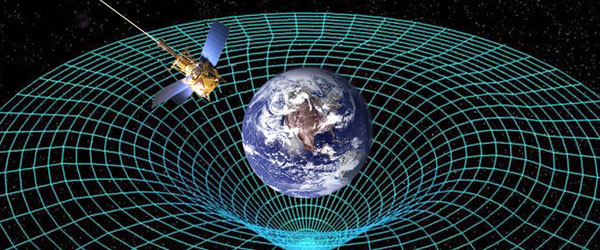Big G, Little g, Red G, Blue g
Recently a couple of my cohorts here at SciFi4Me.com ran across an article regarding a group of scientists who have devised a new method to measure Sir Isaac Newton’s gravitational constant G (see) and insisted that I write an article about this work. Reading the article made me think about other constant values that appear in physics and mathematics and their significance. First, let’s take a peek at G and hit some of the others after that.
If you have been following along with my series of articles, we have encountered this constant several times (one, two, and three). While their particular device has not yet improved upon previous measurements, it is widely believed that it will be able to reduce the uncertainties involved in the measurement. So why is it so hard to accurately measure this value? It is because gravity is the weakest of all of fundamental physical forces. Even though it holds us down, it takes a mass the size of the Earth to accomplish that simple task. The basic equation used to measure this value is:
$latex F = \frac{G\, Mm}{r^2}$
where F is the force of gravity, r is the distance between them; and M and m are the masses of the two objects. Since F, r, M, and m can be measured, we can solve for G. The more precise we can make these measurements, then the more precise our value of G. The early devices used large lead balls suspended on cables, and most devices since then have been variations on this concept.

This may sound easy, but it is not. Small, manageable masses don’t generate much gravity, and the larger you make the mass, the more uncertainty there is in the measurement of the mass. There are also issues with the measurement of the distance between the two objects; temperature variations cause expansion and contraction of the objects altering the precision.
I’m going to be the nitpicker this time and point out that the true value of G is actually irrational; it is a non-repeating decimal that goes on forever. I don’t care how precise your instrument gets, you will never pin this value down exactly. How can I say that? Because our old friend $latex pi$ is buried inside of G. I know that because the equation above describes an equipotential surface which is a sphere. If you are unfamiliar with the term, what is means is that if you have a sphere with the Earth at the center, then the force of gravity is the same everywhere on the surface of that sphere. The surface area of a sphere is given by:
$latex A = 4 \pi r^2$
So I can rewrite the equation as:
$latex F = \frac{B\, Mm}{4 pi r^2}$
and call B Blaise’s constant of gravitation, but that would be presumptuous of me, and any measurement of B is still only as precise as the number of digits of $latex \pi$ that you use. Actually, I can’t take any credit there, since Carl Friedrich Gauss formalized the laws of gravitation using Calculus (there’s that scary word), and if you dig into his math, you will find $latex \pi$. But even Gauss deferred to Newton and kept the factor of $latex 4 \pi$ buried in G, so I will have to follow that tradition along with every other physicist and mathematician since Newton derived the formula.
So that’s big G, what about little g? If you are an avid reader of SciFi, I’m quite certain that you have encountered g on more than a few occasions. By definition, g is the acceleration due to gravity on Earth at sea level; its value is:
$latex 9.8 \frac{meter}{second^2}$.
While this is a widely accepted physical constant, it is completely arbitrary since it is dependent upon being on the Earth at sea level. It also has a different value if you use different units of measurement; in English units, it is:
$latex 32 \frac{feet}{second^2}$
An alien who grew up on a planet whose mass is different from Earth’s will have a different value for g. I also have to point out that our friendly alien will also have a different value for G (no matter how accurate it is). This is because it will also use different units of measurement. In the metric system, G as units of
$latex \frac{meter^3}{kilogram \, second^2}$.
This stuck me as a very odd combination of units the first time that I encountered G, and it still bothers me. This combination of units has no discernible physical meaning. Often the units of G are expressed as:
$latex Newtons \, \left(\frac{meter}{kilogram}\right) ^2$
This makes a little more sense, because Newtons are units of force, but the other factors just seem to be there to cancel out the units of the masses and the square of the distance between them.
I’m a mathematician at heart, and I like my constants to be free of units so that everyone agrees on the value independent of the system of measurements used. Constants with no units are called “fundamental constants.” A common example of a fundamental constant is $latex pi$, it has no units: this is not especially profound because it is the ratio of the diameter of a circle and the circumference of a circle, the units of distance cancel each other out. Hopefully you will realize that this means that G also has a different value if you use English units (pounds, feet, etc.). Therefore, G is also an arbitrary constant dependent on the system that we measure it in, it is not a fundamental constant.
I’m not saying that the physicists are wrong. The problem is that we rely on choices for our basic units of measurement that are arbitrary. Anybody who has tried to do the math using standard English units will know that they are very obtuse For example, pounds are units of force and dependent on the Earth’s gravitational field, and the conversions between the magnitudes of the units make you want to pull you hair out (16 ounces = 1 pound, 12 inches = one foot, etc.).
Even though metric units are easier to work with, they are still based on arbitrary units. The original definition of a meter was one ten-millionth of the length of the earth’s meridian along a quadrant (one fourth the circumference of the earth). That is dependent on the Earth as a baseline instead of a universal standard. The current definition is the distance traveled by light in 1/299,792,458 seconds. That’s a little better because it involves the speed of light, which is universal; but, it is still dependent on the unit of a second, which is one twenty-fourth of one sixtieth of one sixtieth of the time it takes for Earth to complete one rotation. And that screwy number is there to make it fit with the historical measurement of one meter.
It should be obvious that it is quite desirable to have a system that is built purely upon fundamental constants, independent of the chosen base units. The mechanisms to make this happen involve making some seemingly weird changes like measuring distances and time in the same units. There is no reason why we can’t use the same units for both; it is obvious when you accept the fact that time is the fourth dimension of space-time. To simplify the math involved, it makes sense to choose units so that certain values, like c, the speed of light, are equal to one (one unit of space per one unit of time). Similarly, if we could also choose a system where mass and length have the same units then G would simply have units of force. In fact. with the proper choice of units, in my version of the equation B would have the unexciting value of one and wouldn’t even be needed. While this is possible, it has not fully caught on primarily because it means rewriting vast amounts of literature and retraining every scientist on the planet. Shaking off the weight of history is often difficult.
So what have we learned today?
- Some constants are more constant than others.
- The choice of units often leads to constants with strange units.
- Choosing the right units might mean that you don’t get to have a constant named after you.





